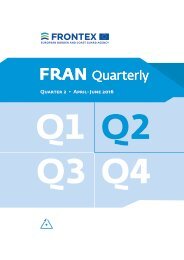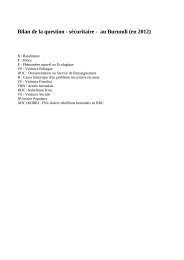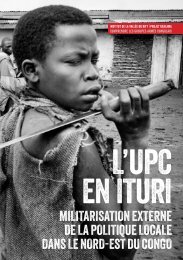You also want an ePaper? Increase the reach of your titles
YUMPU automatically turns print PDFs into web optimized ePapers that Google loves.
FINANCING<br />
methodology. In the decade following 9/11, an international regime was developed<br />
to counter al-Qaeda-style financing, disrupting international transfers by<br />
deep-pocket donors and setting standards for transparency in charities to guard<br />
against the diversion of funds to terrorist organizations.<br />
In Iraq and Syria, IS effectively took advantage of multiple preexisting<br />
dynamics to enrich itself quickly after taking territory. These included a<br />
high concentration of natural resources and established smuggling networks<br />
needed to monetize them; a sizable population and sufficient economic<br />
activity to tax and extort; and opportunities to loot valuable goods, including<br />
machinery and weapons, as well as bank branches, from which it is reported<br />
to have taken as much as $1 billion.<br />
The Islamic State did not develop this expertise overnight. For more than<br />
a decade its predecessors, al-Qaeda in Iraq (AQI) and the Islamic State in<br />
Iraq, had acted according to the strategic decision to derive revenues locally<br />
to avoid foreign dependence and direction. These practices included sales<br />
of stolen goods, black-market fuel sales, and large-scale extortion, closely<br />
resembling an organized-crime operation engaged initially in petty criminality<br />
and later in extortion of the oil sector and contracting, according to<br />
a RAND Corporation assessment of recovered financial documents. 2 The<br />
same review suggests AQI revenue sources were volatile, and funds were<br />
expended mostly at the local level, with little surplus made available to the<br />
organization. This is likely because of the emphasis on rapid expansion;<br />
functioning as a terrorist organization and an insurgency with aspirations<br />
of statehood is expensive.<br />
Likewise, despite its prosperity in 2014, IS’s considerable expenses created<br />
vulnerabilities that the government of Iraq, along with the U.S.-led Counter-<br />
ISIL Coalition, has effectively exploited. One well-known example is the<br />
August 2015 cutoff of Iraqi federal government salaries to employees in IScontrolled<br />
territories, which hindered the Islamic State’s ability to derive revenue<br />
from them through extortion. Previously, employees could collect their<br />
salaries just outside IS-controlled territory, and IS would tax the funds at a rate<br />
of 10–50 percent once they reentered. Additionally, a change in military tactics<br />
beginning in November 2015 allowed greater use of coalition airstrikes to target<br />
oil wells and refineries, as well as oil convoys, reducing the Islamic State’s<br />
oil revenue by an estimated 30 percent. 3 Finally, perhaps the greatest impact on<br />
IS’s bottom line has been the territorial losses: as of mid-2016, the Islamic State<br />
had lost nearly half the territory it had once controlled in Iraq and 20 percent<br />
in Syria, meaning fewer local resources—including people—to extort.<br />
45






